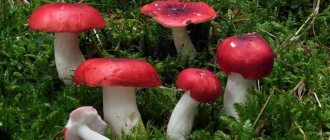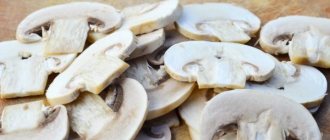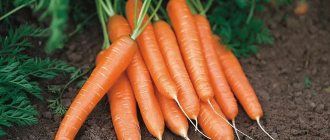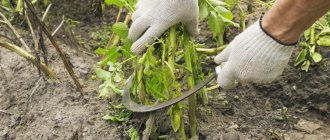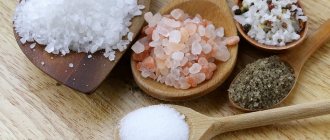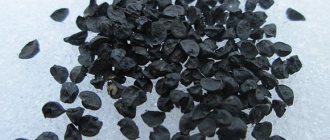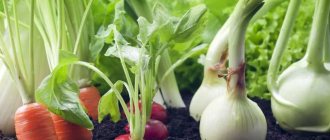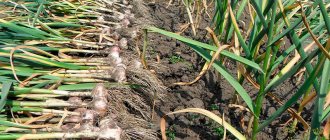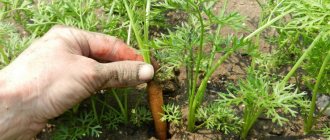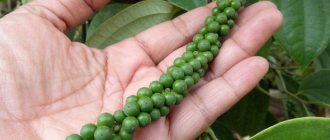Among domestic producers of fertilizer compositions, the Buysky Chemical Plant occupies a special place. There is a wide selection of this enterprise on the market of agrotechnical preparations.
Each of the substances is intended for certain types of work and plants. If we talk about Solution fertilizer, it is universal. Suitable for most plants in the garden and vegetable garden.
Composition, characteristics and release form of the Solution
The Russian manufacturer BCP takes a responsible approach to its products, making them convenient for use. Fertilizer Solution is granular, dissolves well without sediment in water.
This form of release was not chosen by chance: you can always prepare a concentrate for dilution and a small amount. White granules, odorless.
BHZ produces several types of the drug (4 types). Distinctive features are the composition and quantity of the main components.
All types contain:
- molybdenum and zinc;
- copper and boron;
- manganese and phosphorus.
In all types, potassium and nitrogen predominate, since the ratio can vary from 8 to 28% of the total amount of substances.
The series can be used throughout the year. The development was created as an import substitution and the possibility of using the substance in the forest zone.
Manufacturers also took into account the fact that this level of fertilizer is necessary not only for large areas (agricultural industry), but also for ordinary farmers and summer residents. Therefore, Mortar is produced in packages of different weights. Maximum volume 20 kg (bag).
Advantages of the drug
Also check out these articles
- Our partners - Henry Bonnar
- Saxifrage
- How to choose tiles for the bathroom
- Landscape design of the garden for the New Year
Among modern fertilizers, Mortar stands out for its many positive qualities.
- The product dissolves well in water.
- Microelements are in sulfate form.
- Can be used to replenish depleted soil with essential elements.
- Balanced composition. This fertilizer alone is enough for plants to fully develop.
- Increasing the rate of plant growth, thereby reducing the ripening period of the crop.
- Due to the fact that nutrients are well absorbed by plants, the product is effective for both root and foliar feeding.
- Helps maintain plant strength in the presence of diseases and pests.
Types of Mortar
The solution fertilizer complex has several types: four types, which differ in composition (percentage of substances).
Moreover, all contain potassium, phosphorus and nitrogen in larger quantities than other useful microelements.
| Brand | Goals | Compound | Recommendations |
| A | For greenhouses, open ground | Nitrogen – 10%; phosphorus – 5%; potassium - 20%. Additional elements: molybdenum, boron, manganese, copper, zinc (from 0.5 to 1.5%) | For different soil types. Year-round use |
| A 1 | For greenhouses, open ground | Nitrogen – 8%; phosphorus – 6%; potassium - 28%, manganese - 3%. Additional elements: molybdenum, boron, copper, zinc (from 0.5 to 1.5%) | For different soil types. Year-round use |
| IN | For all soil types | Nitrogen, potassium and phosphorus in fractions are 18-6-18. Additional elements up to 1.5% | Exclusively after fruiting |
| IN 1 | Suitable for greenhouses, greenhouses and all types of open ground | Nitrogen, phosphorus and potassium in equal parts = 17% each. Additional substances unchanged | After fruiting |
Important! Before applying fertilizer, you should check the condition of the soil to determine which elements are not sufficient for the full development of plants. They also take into account the fact that grade A can be used all year round, but preferably until the end of fruiting. Brand B is used exclusively after harvesting.
Instructions for using fertilizer
We recommend reading our other articles
- 9 raspberry diseases. We treat according to the rules
- Made with soul
- Fungicide Ridomil
- Garden trimmers
Before use, the Solution fertilizer must be mixed with water. The concentration of the liquid depends on the type of Solution and what crop it will be used for. In addition, the features of using the finished solution may differ.
Cereals
For grains, a 0.05-0.25% solution is made (for brand B1 it is 0.07-0.15%). Apply the solution 1-2 times during exit into the tube - heading. But for brand B1, root watering is carried out when the flag leaf appears, at the end of tillering and when grain is filled.
Industrial crops
For these plants, a solution of 0.1-0.2% is made (for all brands). However, spraying times may vary. For brands A and B, watering is carried out during the growth of greenery 1-3 times, and for brands A1 and B1, fertilizing is done during the formation of the crop (also 1-3 times).
Important!
The Solution fertilizer can be used before planting, during the growing season of crops, or after harvesting. However, the drug must be administered strictly according to the rules, therefore the instructions for use on the back of the package should also be studied for dilution of the product!
Fruit and berry plants
Fertilizer Solution Fruit and berry plants
In this case, the concentration is similar only for brands A and B - a solution of 0.1-0.35%, for brand A1 - 0.25-0.3%, and for B1 - 0.1-0.3%. The time of application for preparations marked A and B is during the growing season of the plants from the moment the buds open. For varieties A1 and B1, 3 feedings are done - during flowering, when fruit appears and after harvesting. The solution is applied only at the root!
Vegetable crops (indoor and open ground)
Root feeding is done for vegetable plants. In the case of grades A and B, the solution is made at 0.07-0.15%, when using grades A1 or B1 - 0.2-0.25%. Watering is carried out 10-12 days after planting the seedlings in a permanent area, and then repeated during budding and during the formation and ripening of the crop. But in the case of brand A1, watering is carried out only during flowering, formation and ripening of the crop.
Coniferous crops
The solution for any coniferous crops is made at 0.2-0.3% (for each brand). Watering is carried out 1-3 times throughout the entire growing season (at equal intervals). The last watering should be carried out no later than September.
Floral and ornamental plants
For watering flower and ornamental crops, a 0.07-0.15% solution is made from any type of fertilizer Mortar. Apply it 1-3 times a year, throughout the entire growing season. The first watering is usually carried out in the spring, and the last in September. Fertilizer is applied using the root method.
Fertilizer Solution for flowers
Decorative bushes and trees
The solution for these plants is 0.2-0.3% for grades A, A1 and B. When using the Mortar B1 brand, you need to make a solution of 0.15-0.3%. Root feeding is done 1-3 times from spring to September.
Lawn
To ensure that the lawn develops properly and does not turn yellow, it can also be fed with Mortar fertilizer. Apply it for the first time in the spring, after resumption of growth, and then after each mowing of the grass. The solution is made at 0.2-0.25% (for any brand).
Important!
Feeding with Solution on the leaf is carried out only in cloudy weather or early in the morning or evening. Otherwise, brown spots (burns) may appear on the leaves of the plants.
The application rate of the drug depends on the amount of watering of the plants. The more water is poured under the crop, the more fertilizer is needed.
Reviews from summer residents
Vasilisa Petrovna (58 years old). I welcome everyone and wish only good harvests. With the help of Mortar I managed to get the desired result. In practice, it is better to combine brands. This is much more profitable than using only brands A or B.
Yaroslav Georgievich (67 years old). I have always preferred organic fertilizers. But while I was in the hospital, the children used the Solution. It is clear that manure has a smell, but the drug does not. At first I was worried about the harvest, but already during the development of crops I noticed special positive aspects (when compared with organics). Therefore, this is the second season that I have used Mortar.
Reviews from gardeners about the fertilizer Mortar
The solution shows high effectiveness when used for a wide variety of plants, so gardeners have a good opinion of it.
- Tatyana Skripka : “It’s impossible to grow a garden without fertilizers. I have chosen several varieties for my crops and use them from time to time. I use different brands of mortar. Before flowering - A, and during the growing season - B. It is good because it contains a full range of important elements, which plants usually have a deficiency in in certain cases. This is emergency help for any plant!”
- Petr Vorokhov : “I love the solution for its accessibility and effectiveness. I use it mostly in the spring - as soon as warm weather sets in and before flowering. Garlic really loves the Solution fertilizer, after applying the drug it starts to grow, produces a lot of greenery - what you need in the spring! But in the summer I already take other fertilizers, because, as for me, there is too much nitrogen in the Solution!”
- Lisa Kalinina : “I use the solution for growing flowers. Among budget funds, I like this most of all. It is economical, dissolves well in water, is easy to use, and the results are pleasing. Decorative shrubs on it provide a lot of greenery, the flowers delight with their rich colors. Of course, you can find a better quality drug, but this one is not bad.”
What crops is Mortar suitable for?
What can be fertilized with Mortar? The drug is suitable for the following groups of plants:
- Cereals;
- Vegetables;
- Fruit;
- Berry;
- Lawn;
- Conifers and others.
There are different types of Solution with different contents and concentrations of active components. A different preparation should be selected for each crop.
Features of use In closed ground, the product is used through irrigation and sprinkling systems. There are several brands of Mortar that are designed for different developmental stages. This ensures harmonious growth of plants throughout their development.
It is also applicable for foliar feeding. This promotes better absorption of all nutrients. This feeding is a spraying with the use of the drug. It not only provides effective nutrition, but also allows you to vary the saturation of crops with nutrients at different phases of their development.
Fertilizer is often used in open ground conditions. In this case, it is suitable for both spraying and root procedures. It is allowed to mix products with drugs that provide protection against diseases and pests. What is it for? This serves two purposes:
- Reducing stress loads inevitable when using protective equipment;
- Reducing labor costs for soil cultivation.
All these nuances make the product universal and required in a summer cottage.
Instructions for use If this is a basic application, it should be done in the spring months when digging the soil. You will need 45-55 grams of substance per square meter. meter. Suitable for flower, potato and vegetable crops. Instructions:
- The first feeding is carried out at a time depending on the type of plant. If these are tomatoes, it is necessary to carry out the procedure when 5-6 leaf plates are formed, cucumbers - 5-10 days after the emergence of seedlings, carrots and root vegetables - 20-30 days after the formation of seedlings;
- The second feeding is carried out at the beginning of fruit set and root formation. Per sq. meter will require 7-10 grams of composition;
- For potato crops, the first fertilizing is planned at the beginning of flowering. The subsequent one is performed when tubers form. Per sq. meter requires 10-12 grams;
- For strawberries and fruit and berry species, the application rate is 10-20 grams (strawberries) and 25-30 grams (other crops). The first application is carried out immediately after the snow has melted. The second procedure is implemented after flowering;
- For fruit trees, the first procedure occurs during the period of bud formation, the next one – 10-15 days after flowering. The approximate dosage is 50-60 grams per square meter. meter.
Read also: Fungicide Quadris - instructions for use
For foliar feeding, you will need to prepare a working solution. It will require diluting 20-40 g in a bucket of water. The procedure is carried out in cloudy weather. It is better to plan them at the beginning or end of the day. This will help protect the leaf plates from burns.
Its price is approximately 42 rubles per 50 grams.
Dosage, how to use
For different crops, the dosage of mortar is slightly different. It can be used for fruit trees, ornamental plants, shrubs, and vegetables.
Read also: Fungicide Skor - instructions for use and characteristics
The fertilizer is most suitable for the following crops:
You can start processing after the seedlings have been planted. To do this, you need a solution, which is prepared with buckets of water and 15 g of Mortar (maximum 25). Vegetable seedlings are watered with this solution immediately after they are planted.
Next, we fertilize after the fruits appear. We do this once a week, the solution is the same as for seedlings.
We water the zucchini and cucumbers when shoots with five to six leaves appear. You need about 15 g of fertilizer per bucket of water. Water as usual. When melons or cucumbers begin to bear fruit, they should be fed every week, and the concentration should be 25 g per bucket of water.
It is very important to fertilize in cloudy weather, in the evening or early morning, before the sun rises. This will prevent solar radiation due to active evaporation or through water droplets.
We water root vegetables and cabbage 30 days after sowing the seeds. For one bucket of water you need from 10 to 15 g of solution. Then we water it weekly, the dosage is 25 g of fertilizer per bucket.
Apple and pear trees
And other fruit trees. We fertilize them in the spring, when we dig up all the trunks. Just mix the soil and mortar. About 35 g of fertilizer is needed per square meter. Liquid fertilizing can be done when all the trees have bloomed. For one bucket of water, take 35 g of product. This amount is enough for one meter square of soil around the tree.
Strawberries and wild strawberries are watered in March-April, when the snow disappears completely and is no longer expected. In order to make a solution, 15 g of fertilizer is dissolved in one bucket of water. We process the entire area where these berries grow. Next we process it after the strawberries have bloomed. The concentration is the same.
For currants, raspberries and gooseberries, you need to dilute about 20 g of solution in a bucket of water. This is the amount per bush. We also process in April or March. After flowering, we fertilize again, taking about 20 g of product per bucket.
Fertilizing flowers
Perennial flowers are fertilized with a solution with a concentration of 25 g per bucket. We also water the flowers that we just planted.
Then we water it a couple of times a month, the concentration is the same. We water the ornamental grass with a solution with a concentration of 15 g per bucket. We do this immediately after sowing the grass, and then after each mowing of the lawns.

